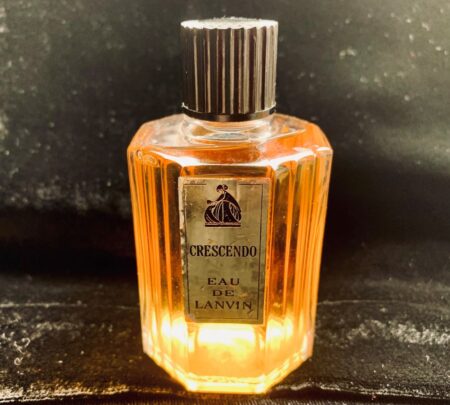
Vintage Lanvin Crescendo 1965 (some sources cite 1958) from Ida’s collection
Exhaust the little moment. Soon it dies.
And be it gash or gold it will not come
Again in this identical guise. ~ Gwendolyn Brooks
When I recently reviewed vintage Lanvin Rumeur (by André Fraysse), it became clear to me that ÇaFleureBon hasn’t fully explored the House of Lanvin – yet there is so much to love (beyond the oft-reviewed Arpege (André Fraysse and Paul Vacher) and the mysterious Madame Zed’s My Sin (Mon Péché). My passion goes way back to Scandal de Lanvin (1931, André Fraysse), which I referred to as ‘my gateway drug’ over 13 years ago in those early months at ÇaFleureBon. I feel that Crescendo should be next, precisely because of its (apparently) polarizing nature amongst reviewers – and the reality that each reputable source I researched never seemed to agree entirely with others regarding which notes were actually present in this scent. Let’s muddy the waters a little and investigate this elusive aromatic creature.
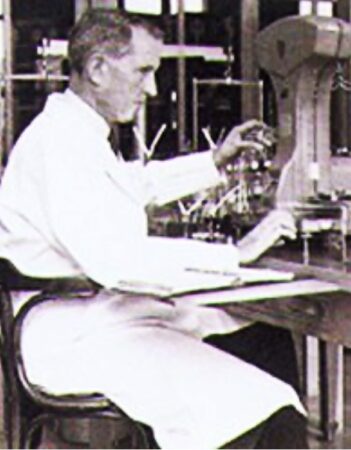
Perfumer Andre Fraysse via wiki
What do we know for certain about Lanivn Crescendo? The perfumer was André Fraysse. It took him 20 years to develop this perfume. Somehow, the name Crescendo was trademarked in 1939, years before the fragrance was released. After this, everything becomes hazy: there are several sources which insist that it was released in 1958, even though you will often see 1965 credited as the year in which it premiered. If the latter is accurate, then Crescendo had a very short run, as it was discontinued in 1969. Four years only? Why?
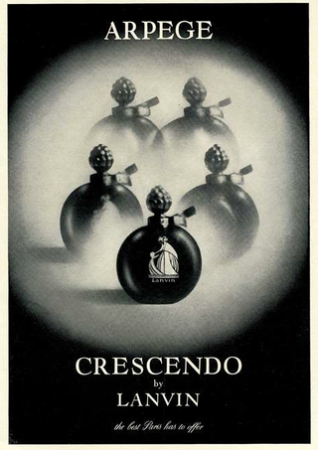
source general use
Now we come to scent description: I’ve read well-regarded sources that describe Crescendo as a linden fragrance, a magnolia perfume, a primarily ylang-based scent, a hyacinth-heavy perfume. Some insist that is primarily carnation, others that tuberose is the star attraction. Several people agree that it commences with aldehydes, while others don’t even mention them; musk is only once differentiated as Tibetan musk, leaving us to wonder whether nitromusks (so popular during this time frame) are part of the equation, vs. deer musk. I’ve seen menthol mentioned in one description, and nowhere else – and rosewood in a few, but not all. Does Crescendo include heliotrope, or not? Is there amber or ambergris – two very different species, in my book. Some reviewers perceive it as a masterpiece, while others don’t feel that it’s worth the effort to seek it out. I think that you can appreciate my confusion here. I’ve probably confused you as well.
I don’t think that I’ll ever be able to parse out the truth, unless I have the opportunity to discuss this with Fraysse’s sons/grandsons; perhaps even they aren’t certain, either.
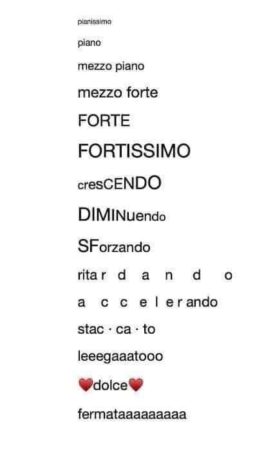
Musical Humor group image of musical terms via Facebook
Let’s begin with the musical term crescendo. What’s its significance? There exist layers of meaning: a gradual increase, i.e., a crescendo of excitement. More specifically: a gradual increase in volume of a musical passage; the peak of a gradual increase; climax. Simply stated, a crescendo is a situation or musical piece which slowly builds to a climax – which is a beautiful premise for Lanvin’s perfume: a golden moment captured in amber, complex, shimmering, and full of contradictions.
Lanvin Crescendo is as spicy, honeyed, and lusciously floral a perfume as one might dream of: it radiates like the full sun, all the while acknowledging a contrapuntal shadow which underlies its voluptuous intent. Were you to study the litanies of notes offered, you might come to the conclusion that Crescendo would be cloyingly sweet, indolic and heavy – perhaps suffocatingly so. While this fragrance is no featherweight, neither is it as ponderous as all that; it possesses a symphonic presence which is wonderfully orchestrated by a master perfumer. Glowing aldehydes flatter the dulcet charms of linden, honey, and heliotrope, creating a sweet expansiveness – while the tang of marigold tempers more fiery aspects of dianthus, carnation, and the unnamed spice notes. Indolic floralcy arises from tuberose, yes – but also from hyacinth and jonquil, tones which exhibit judicious quantities of divine decay. In contrast, both leather and incense nuances feature most prominently at first, later taking a quieter stance as the perfume dries down. Crescendo’s piquant notes never seem to fade into the background, while the sumptuous base of earlier times flourishes with abundant oakmoss (pre-IFRA), precious sandalwood, breathtaking musks and a rich, powdery, mellow patchouli partnered by a soupçon of vanilla.
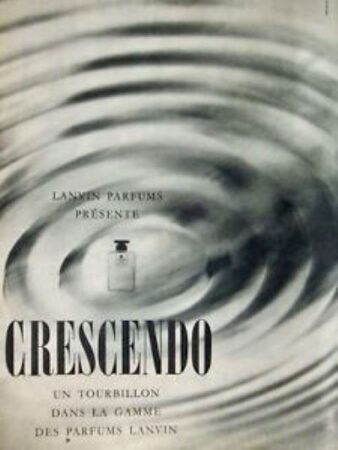
I ask myself why Lanvin Crescendo wasn’t as commercially successful as other Lanvins when it was released – and I wonder if it felt too challenging for the late 1950s (if indeed it was launched then), or perhaps that in 1965 (the alternative release date), one could see the foreshadowing momentum of green aldehydic florals building, and tastes were changing to suit that mode. Crescendo seemed to fall through the cracks, despite its overwhelming beauty – and poor timing might have had a hand in that. Roundly fêted or not, Lanvin Crescendo remains a bit of a fragrant unicorn, and a perfume which merits renewed attention – if only for the fact that such scents will not come again, because the aromatic materials have become demonized and banished from the perfumer’s palette in the form in which they once existed. I believe that it is worth the time to seek out a sample, if only to better understand perfume history and experience how the masters achieved such aromatic glory.
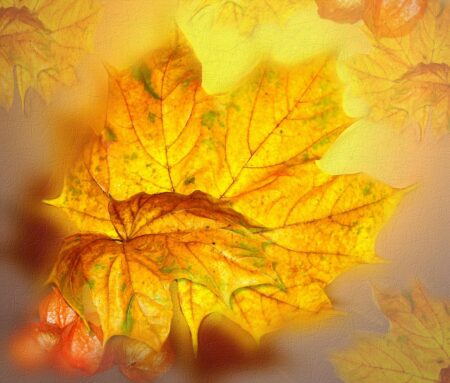
via Pixaby
In youth I sought the golden flower
Hidden in wood or wold,
But I am come to autumn,
When all the leaves are gold. ~ G.K. Chesterton, Gold Leaves
Lanvin Crescendo is from my collection. My nose is my own…
There are three sources that list different notes
Notes according to Cleopatra’s Boudoir: aldehydes, hyacinth, linden blossom (tilleul), dianthus, ylang ylang, marigold, honey, tuberose, carnation, iris, heliotrope, leather, tobacco, amber, incense, spices, oakmoss, sandalwood, vanilla, musk, patchouli
Notes per Basenotes: orris, carnation, hyacinth, linden, rose, magnolia, honey, marigold, tuberose, amber, olibanum, menthol, leather, tobacco, rosewood, oakmoss, sandalwood, vanilla, musk, patchouli
Notes per lanvinperfumes.blogspot.com: aldehydes, hyacinth, jonquil, linden blossom (tilleul), dianthus, rose de France, magnolia, jasmine, ylang ylang, marigold, honey, tuberose, carnation, iris, heliotrope, rosewood, leather, tobacco, ambergris, incense, spices, oakmoss, Mysore sandalwood, vanilla, Tibetan musk, patchouli
~ Ida Meister, Deputy and Natural Perfumery Editor
Please follow us on Instagram: @cafleurebonofficial @idameister
